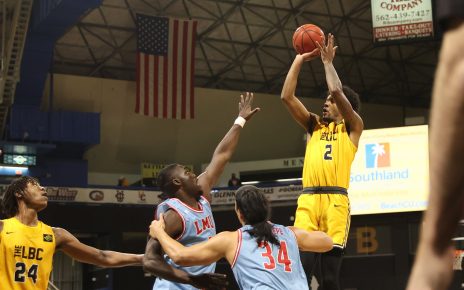The coronavirus pandemic has created a new concept in the workplace, assigning the tag of “essential worker” on a list of professions. During the global health crisis, frontline healthcare workers received much of the spotlight, along with police, firefighters, and those working in the food industry.
But there is another line of essential workers that provide the needed support to those professions, and help keep the community going. While doctors, nurses, firefighters, and teachers serve our community, their children need care and supervision as well. That’s where preschools have provided an invaluable service to Long Beach’s families, safely watching after children so that parents can continue providing the most needed services to the community.
Once K-12 schools were shut down in March, many parents in essential roles with young children were faced with uncertainty. As they were asked to work longer, more stressful hours, what would they do with their children during the day?
“They were in a panic, asking if we’re going to be open,” said Candy Brizzolara, Director of Marina Montessori School in East Long Beach. “We said as long as we weren’t forced to close by the state, we are open. A lot of them work as doctors and nurses in the hospital, firefighters, or grocery store workers, so they were essential. They were very happy we were open. I don’t know what they would have done, because there wasn’t anything out there as far as schools or daycare. It would have been very difficult had we not stayed open. And that’s one of the reasons we decided to stay open is for them.”
The school has put in place additional safety and sanitization measures to keep kids, parents, and teachers safe. All parents and teachers must wear masks at the school, and parents are not allowed to enter the classrooms. Instead of working in groups, as is customary, the children are now asked to work individually, and all supplies are cleaned before being used by another child. Furthermore, six-foot social distancing has been put in place for nap time and in other activities, though with kids ages 2-5, that’s obviously a challenging rule to enforce.
While Marina Montessori was able to remain open, and maintained a majority of its enrollment, other schools in the area have had a tougher time. Montessori Children’s House on Atherton Street was closed from March until July, reopening with five kids in the school. The current enrollment is at about 25 percent of what it was before the shutdown, but the school is providing valuable assistance to those parents with child care needs.
Jessica Wadley has been the director of Montessori Children’s House since 2007, and she told the story of a parent who was particularly relieved to be able to send her son back to preschool.
“We had one parent who has been working at home. She’s a single mom and her son was only three with no other siblings,” Wadley explained. “When he was able to come back to school in July, it was the best thing not only for him but for her. She said on that first day back she got so much work done. She was so excited to get her work done, but also to be able to take a shower uninterrupted. Just that mental state for that parent, it was awesome to be able to give them that. Because for the past few months they were at wit’s end sometimes.”
The mental state for children and parents alike has been in turmoil over the past six months. The uncertainty of a deadly virus mixed with the lack of routine and financial uncertainty has put a strain on everyone. For kids, having their normal school routine and extracurricular activities canceled has isolated them from kids their age, and being stuck indoors for an extended period of time has had its effect on young children.
Brittney Phillips has been a teacher at Marina Montessori for 13 years, and she recounts one particular example of a child coming back to school with fear and uncertainty.
“When they finally did come back to school, it was like having a completely different child than we’re used to, even though it was only three months,” Phillips said. “The kids were told they couldn’t touch other people, so when their friends saw them and were running up to them, the child was almost in tears like ‘Get away from me, don’t touch me.’ So that was hard, because now you’re not trying to help the child understand that it’s ok to say hi to your friends. You can just say you’d like to wave from a distance. But you have a child that’s overwhelmed with being around other kids because they were told they couldn’t be around people, and they’re almost scared of other people now.”
Phillips admits that was an extreme example, and most of the kids have been beyond excited to come back to school. From Wadley’s perspective, she’s also seen both sides of the situation. Many of the children at her school don’t have siblings, and haven’t been able to interact with kids their age. She’s heard from parents who have had their 4-year-olds begin to talk to them as if they’re adults. Furthermore, some of the older kids at the school have suffered from anxiety issues after so much time spent at home.
But for kids and families who have returned to preschool, Wadley has seen an immediate and positive impact on the children.
“For them, it’s been pure joy to be around other kids their age,” said Wadley. “And that for me is the biggest part of it, for them to be able to have that interaction.”
Photo by Mike Guardabascio





